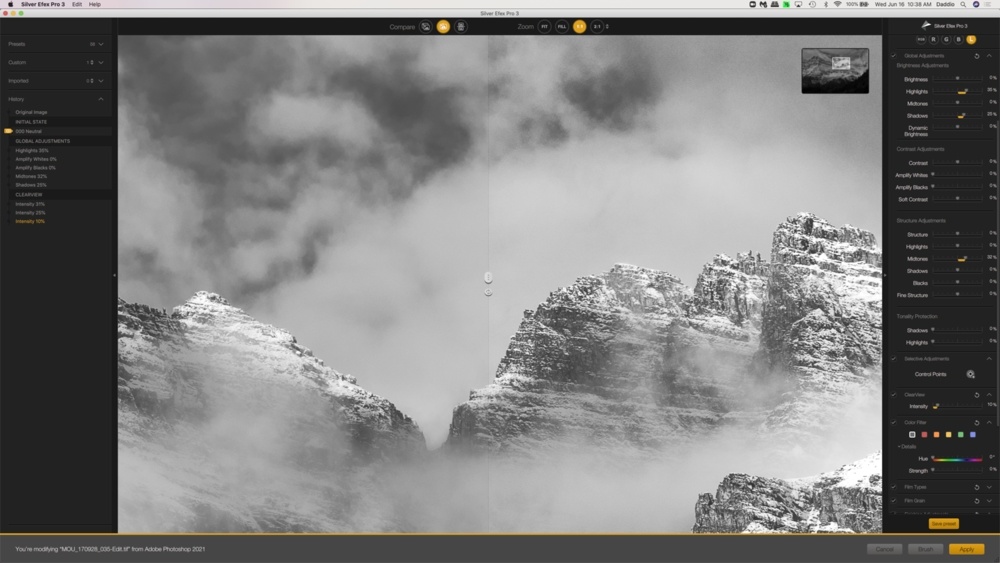

Plumbers use different wrenches, sealants, brands of plumbing fixtures. Painters like different brushes, paints, canvases, etc. No color tones are applied on top of the black and white conversion, but their gray undertones are adjusted, so you’re not adding a tone as much as adjusting a current one. Sliding to the left, or the cooler tones, brightens those tones only. Sliding it to the right, or the warmer color tones, will brighten those undertones of gray. This same thing happens when you slide the temperature slider after black and white conversion in Lightroom. Sliding it to the left would then darken those tones. Let’s say you slide the blue Black & White Mix slider to the right (see pic below), the spots in the image that used to be blue increase in brightness. The file still knows where the colors are in the image and when converting to black and white, it applies that tone to a similar tone of gray. It has a similar impact as the color B&W adjustments do. TEMPERATURE SLIDER WITH LIGHTROOM B&W CONVERSIONĪs stated in the disclaimer earlier, if an image is converted to black and white in Lightroom, the temperature slider does not work in the same manner. It has been used on occasion, but seldom, as I typically prefer simply cooler or warmer tones overall or selectively applied. It’s not as selective as you have to apply the tones specifically to highlights and/or shadows and there is no way to brush these tones in, but it can work. There is another option to applying these tones, and other tones, to your black and white image through the Split-Toning menu in Lightroom. Click on the brush tool, which is located just above the Basic panel in the Development module – see below. Let’s say we just want to apply a tone to the sky in this image. It’s that simple and pretty much how I tone every black and white image I make! But you might be asking, “What if I want to selectively apply a tone to the image?” Well, that’s pretty easy as well, all you need to do is use the brush tool! As you can see, the warmer image yields a more sepia-like tone. It’s as simple as dragging the slider to the right, towards the yellow color of the slider. Let’s say you would prefer the warmer tones instead. A -12 setting gives a nice cooler tone without changing everything to blue – see the image below. To add a cooler tone to the image, simply drag the slider to the left, towards the blue part of the slider, until you obtain the desired cooler tone. You can find the temperature slider in the BASIC portion of the Development module. Being that we converted outside of Lightroom, the temperature slider now will apply temperature tones, cold or warm, on top of the image. It looks good from a tonal balance, light to dark, but let’s say we want to add a cooler tone to the overall. The image below was converted to black and white and edited for selective exposure, contrast and structure in Silver Efex Pro 2, then saved back into Lightroom. Ok, so, there’s nothing new about using the temperature slider in Lightroom – it’s a very useful tool in color balance and creative editing, however, it is my GO-TO slider for black and white toning! Let’s look at how it works. There are other options prior to exporting and we’ll mention them as we go! With that said, this method of toning can’t be used in the same manner when conversion is performed in Lightroom, that is unless the image is externally edited afterwards. Second, The statements made both previously and later in the article about the Lightroom black and white conversion are based solely on my preference – if you like converting there, go for it! This is not a rule as much as a possible tool set that may help you in toning your images quickly and effectively. It’s really the only time my images are converted to black and white in Lightroom directly. First, I LOVE the VSCO film presets in Lightroom and use them almost exclusively for portraits, color or black and white. Two things to get out there before we move one.


 0 kommentar(er)
0 kommentar(er)
